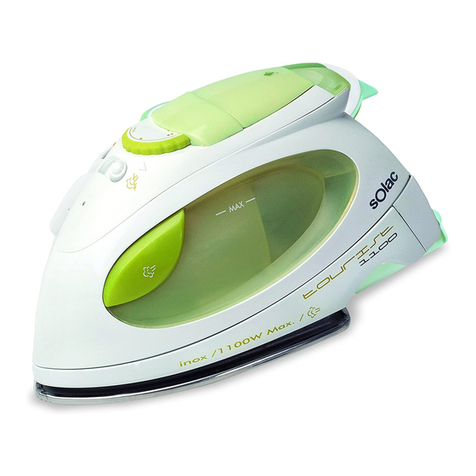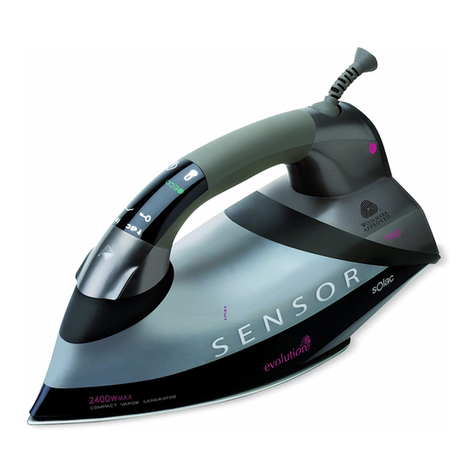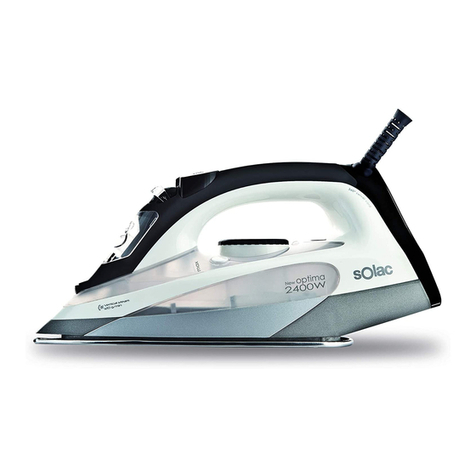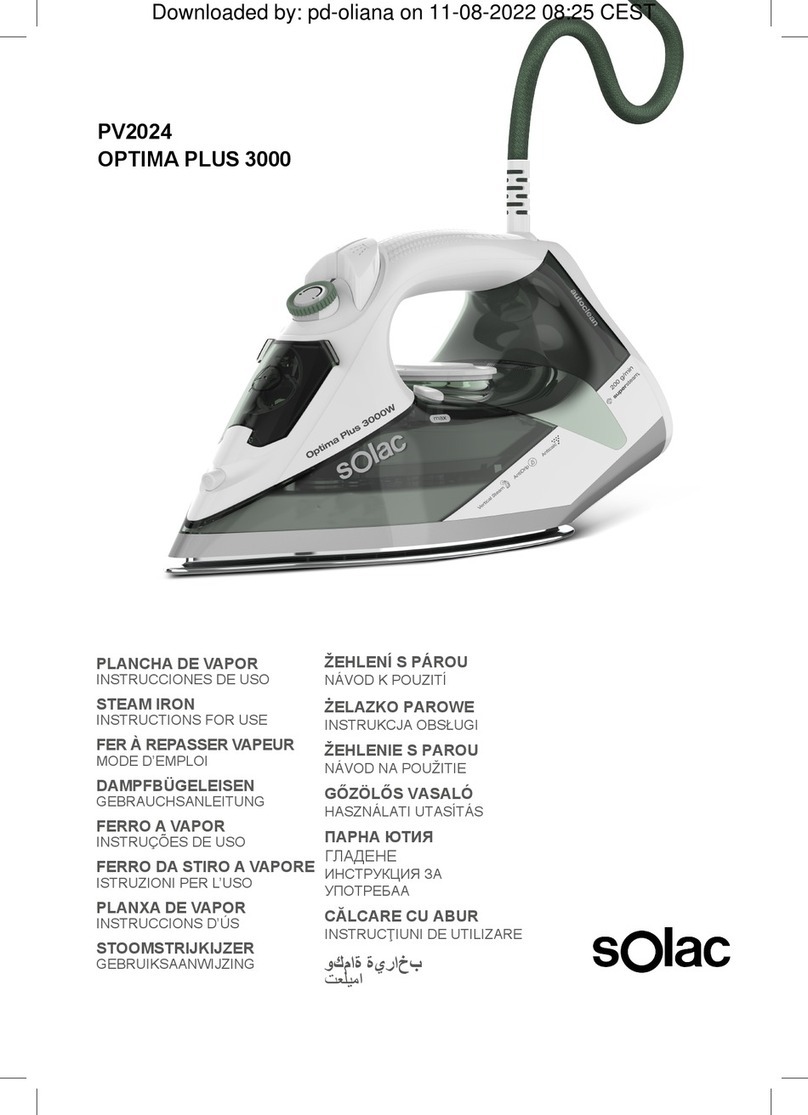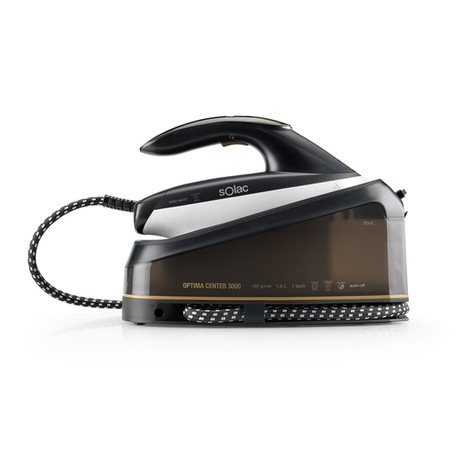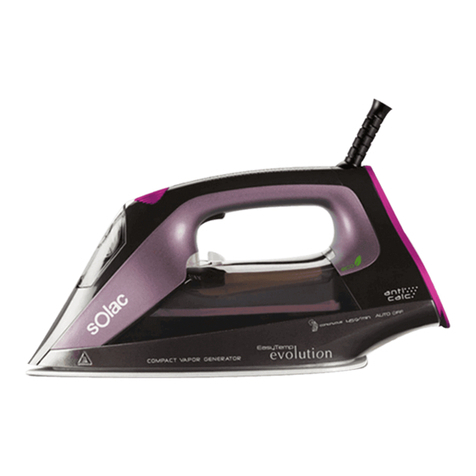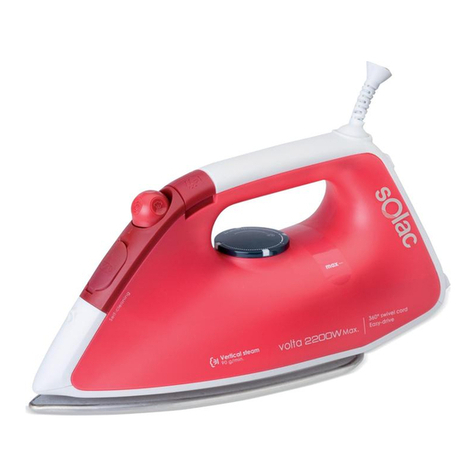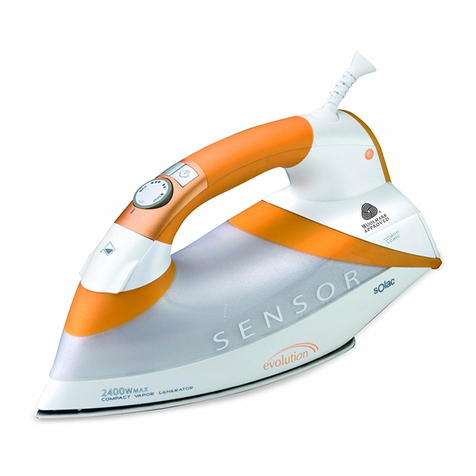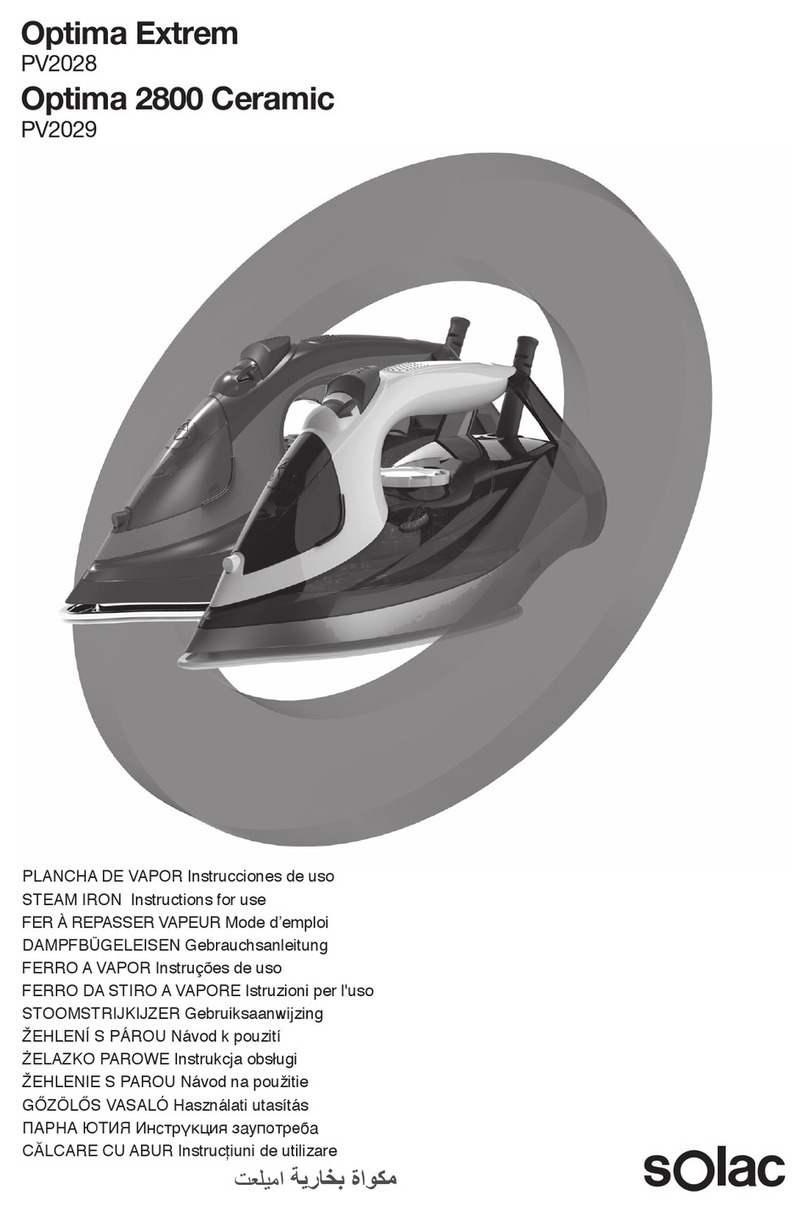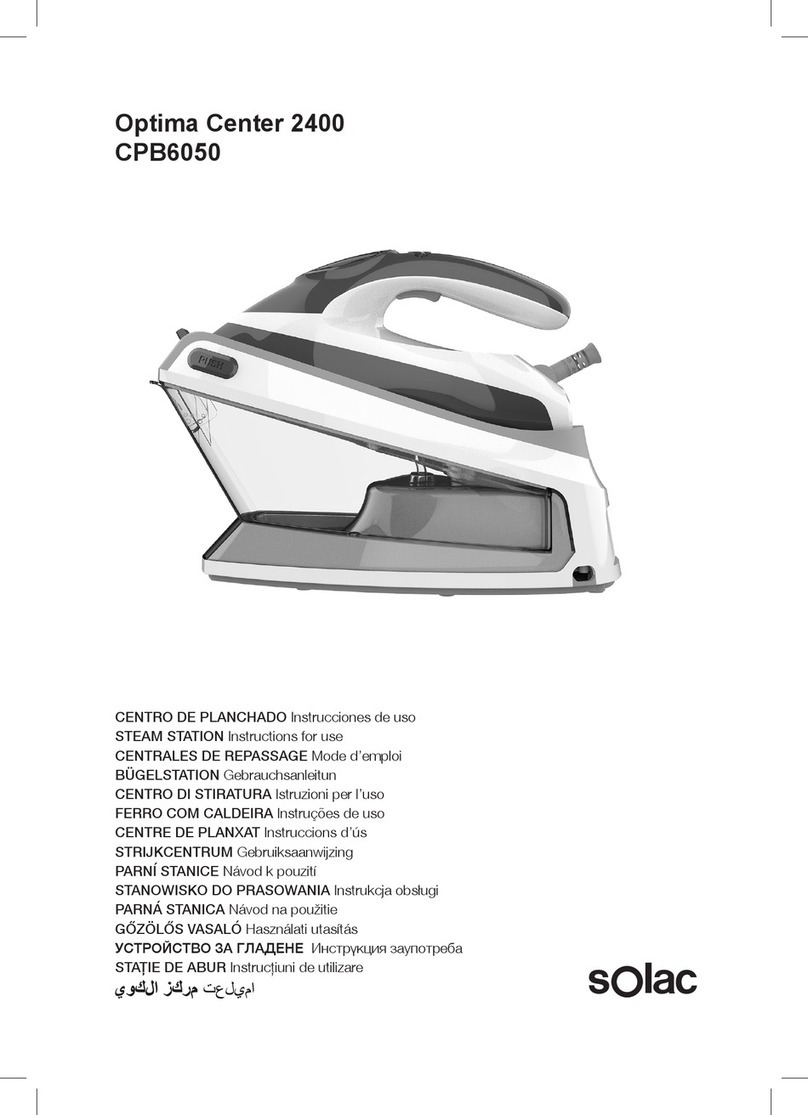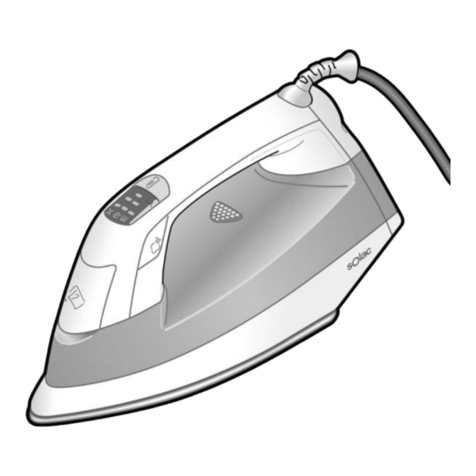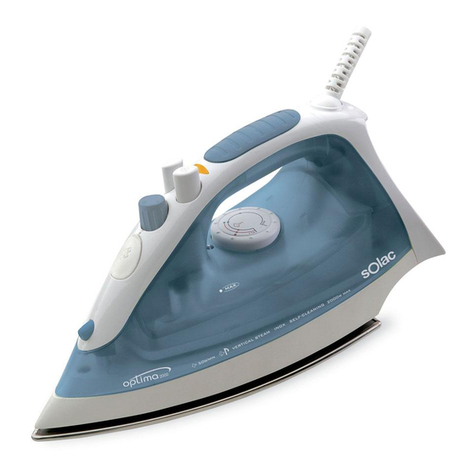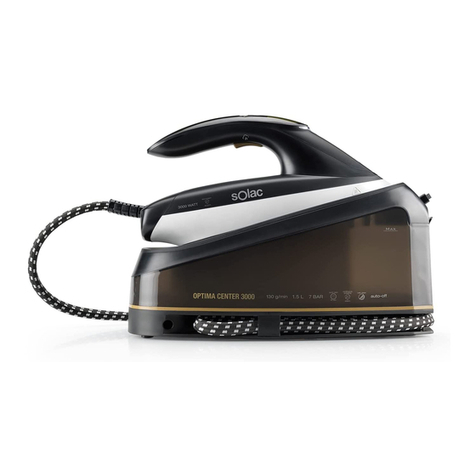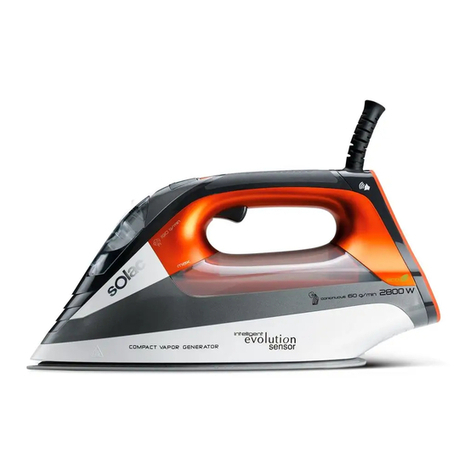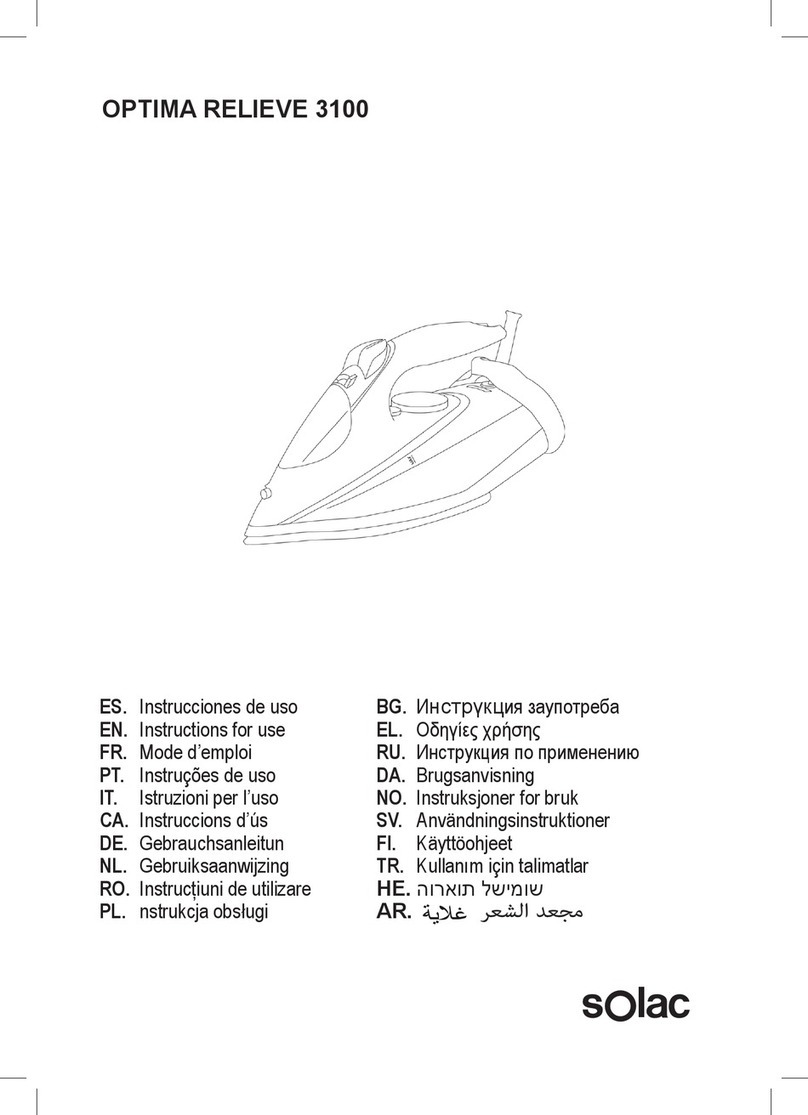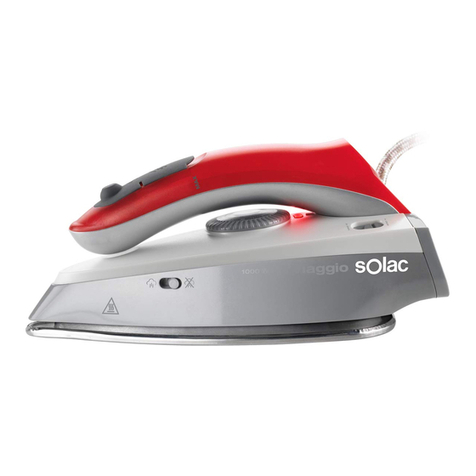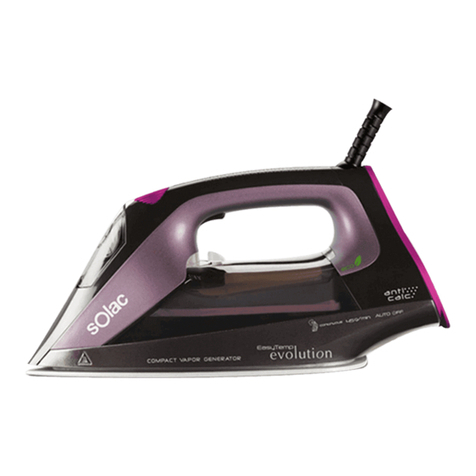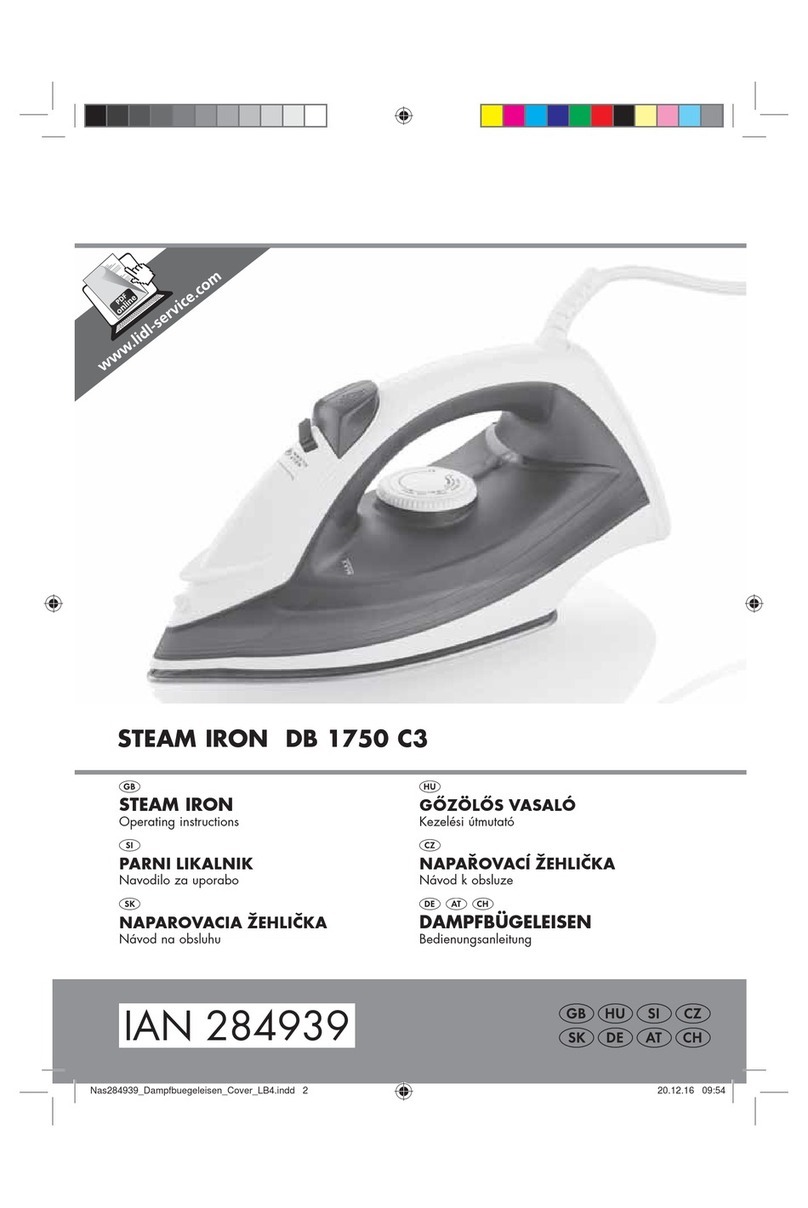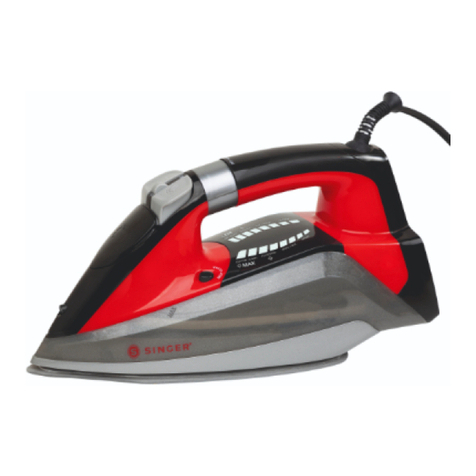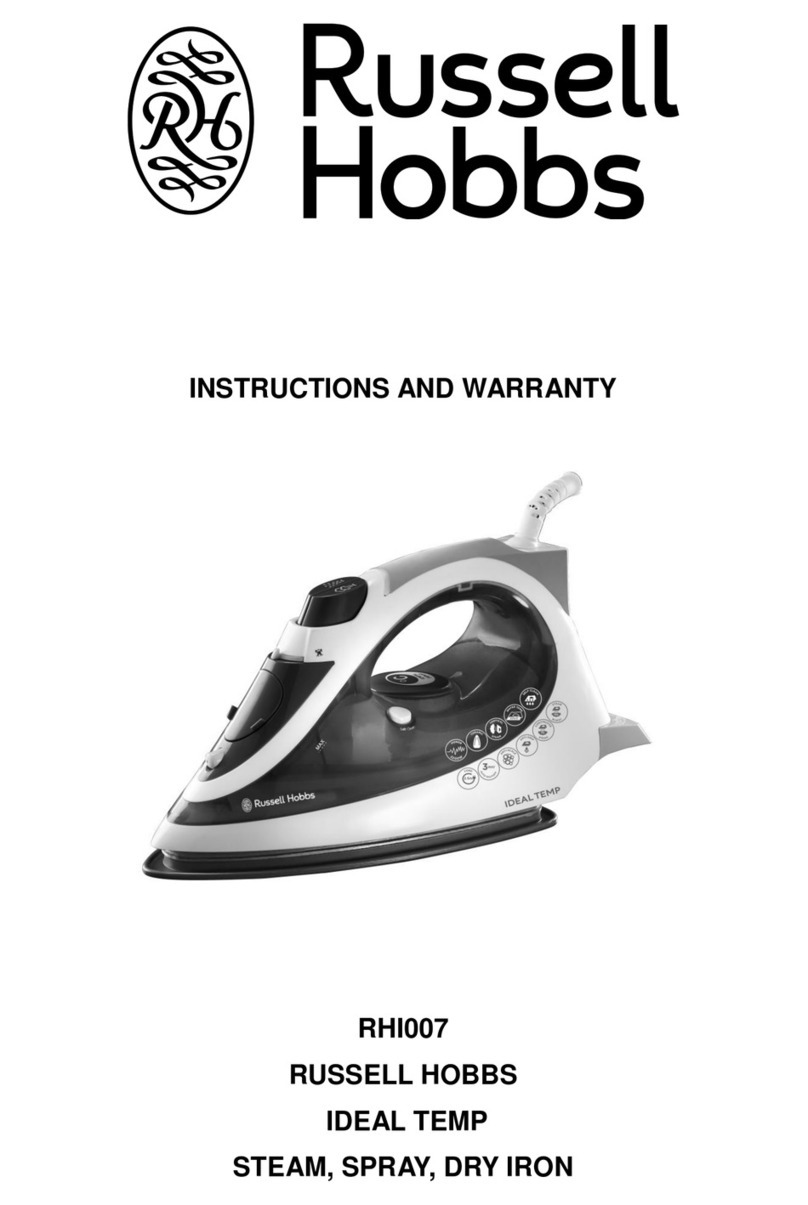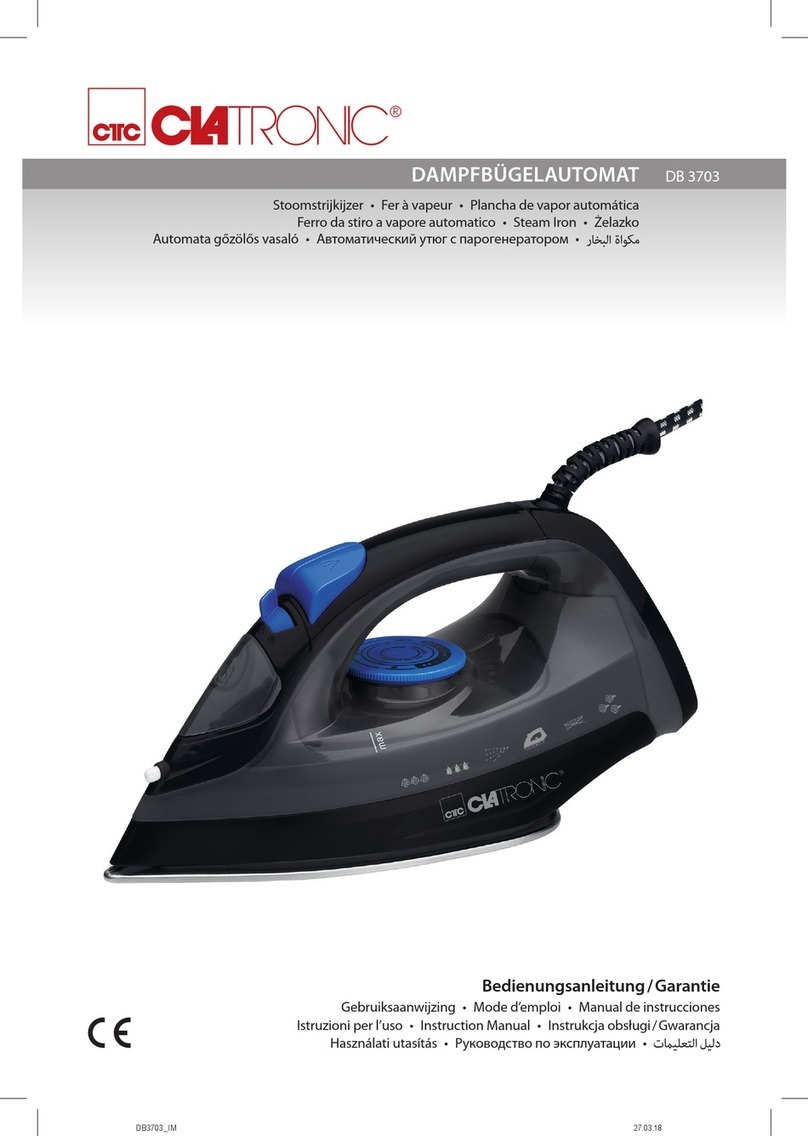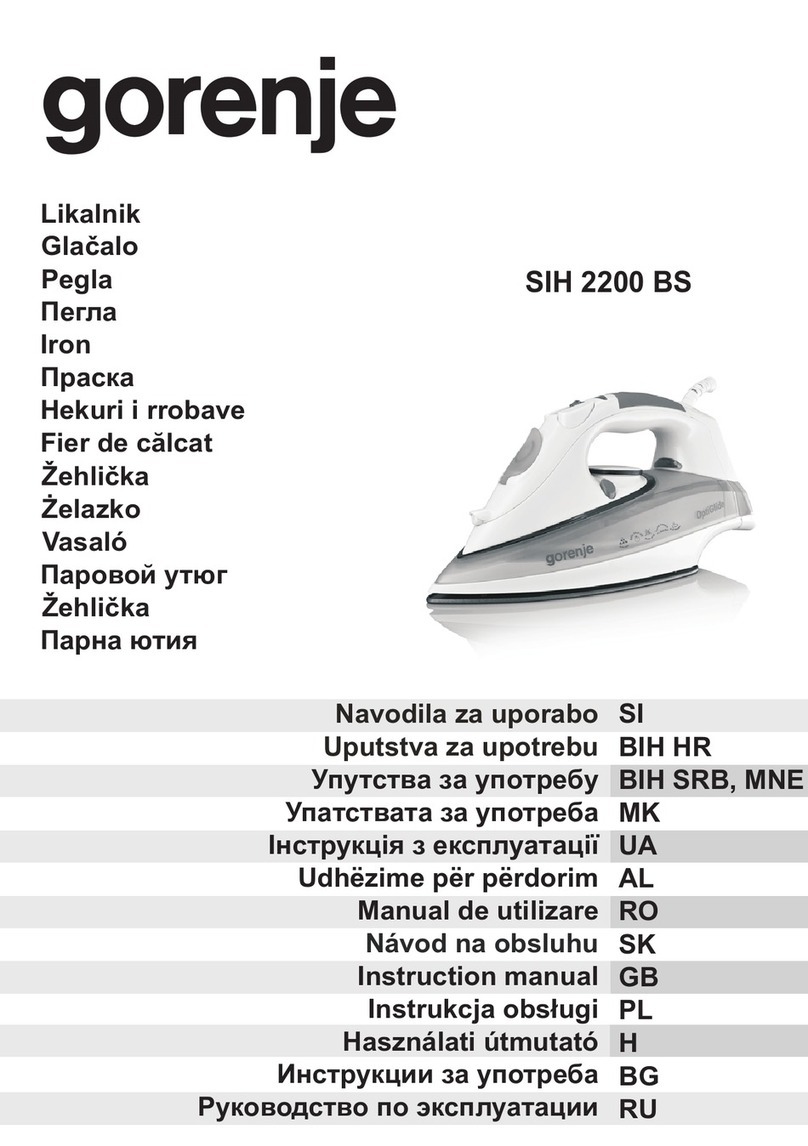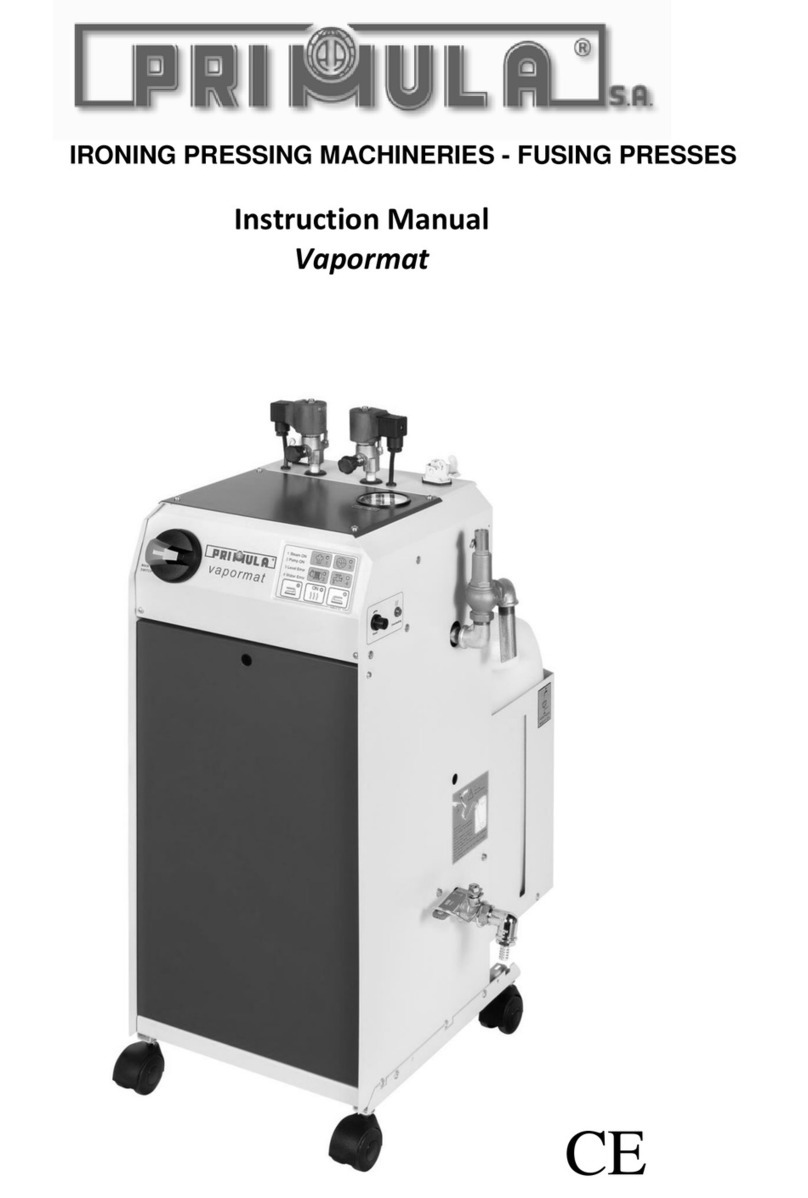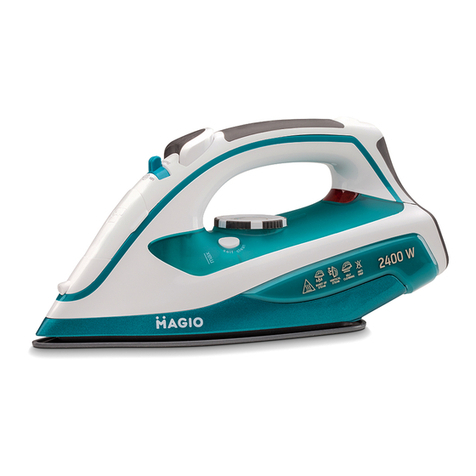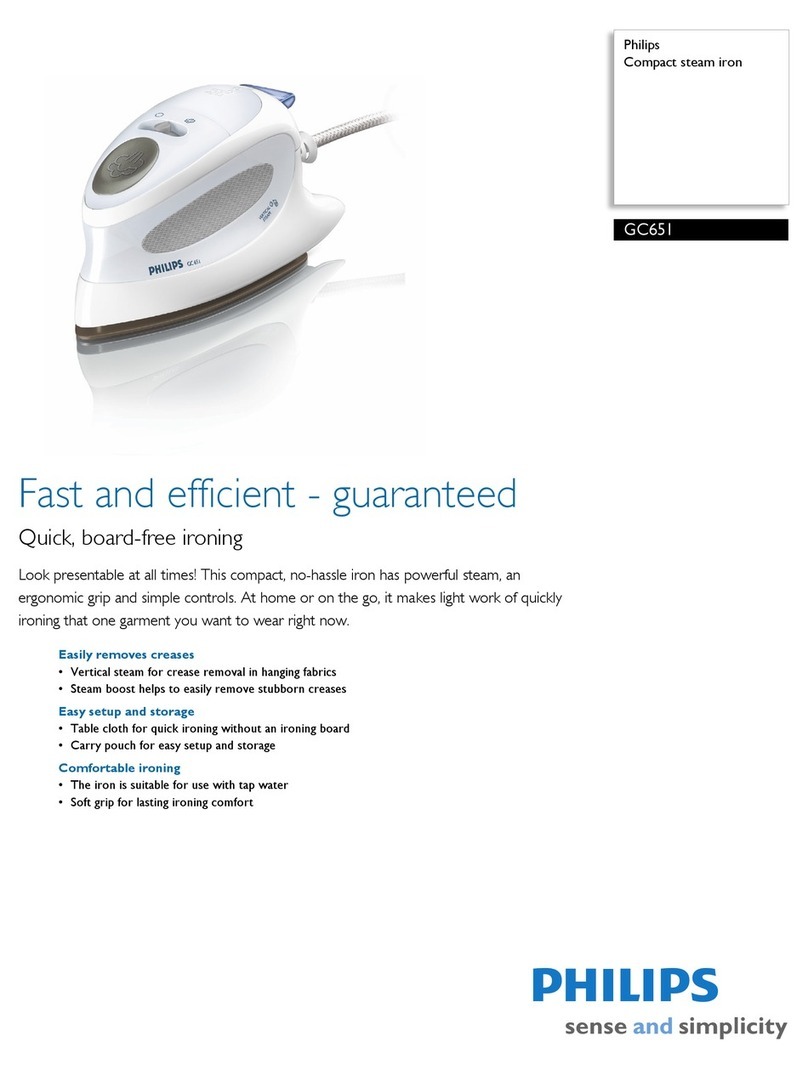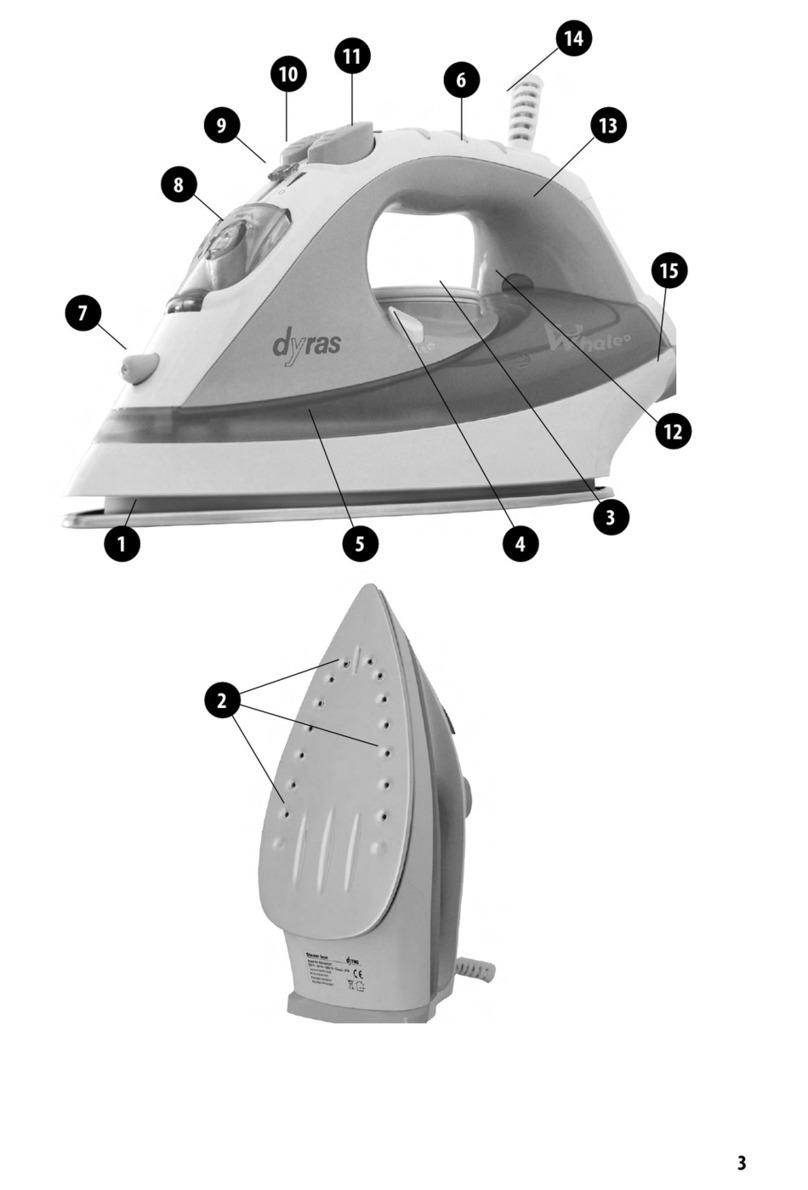
Indicaciones de Seguridad 5
es
ESPAÑOL es
1 Indicaciones de Seguridad
• Lea completamente estas instrucciones antes de utilizar su aparato.
• Este aparato es sólo para uso doméstico, no industrial. Cualquier uso
diferente al indicado podría ser peligroso.
• Mantenga el aparato siempre fuera del alcance de los niños y
discapacitados. Cuando lo utilice en su presencia, extreme la vigilancia.
• No realice ninguna modificación ni reparación en el aparato. Ante
cualquier anomalía en el cable u otra parte del aparato, no lo use y
acuda a un servicio de asistencia autorizado.
• No utilice piezas o accesorios no suministrados o recomendados por
SOLAC.
• Antes de enchufar el aparato a la red eléctrica, compruebe que el voltaje
indicado coincide con el de su hogar.
• Desenchufe el aparato siempre después de su uso y antes de
desmontar o montar piezas y realizar cualquier tarea de mantenimiento
o limpieza. Desenchúfelo también en caso de apagón. Cuando enchufe
o desenchufe el aparato, debe estar desconectado.
• No tire nunca del cable ni cuelgue el aparato por él. Desenchufe el
aparato tirando siempre de la clavija, nunca del cable.
• Evite que el cable de alimentación entre en contacto con aristas
cortantes o superficies calientes. No deje el cable colgando por el borde
de la mesa o encimera, para evitar que los niños tiren de él y hagan caer
el aparato.
• No sumerja nunca el aparato en agua u otro líquido, ni lo introduzca en
el lavavajillas.
• El aparato debe conectarse a una base de toma de corriente que
disponga de un contacto de tierra adecuado.
• No deje el aparato enchufado a la red sin vigilancia.
• La temperatura de la suela puede ser elevada cuando el aparato está
en funcionamiento. Durante el funcionamiento, no toque la suela y coja
la plancha sólo por su asa, y no permita que el cable toque la suela.
b¡¡ATENCION!!: Cuando desee desprenderse del aparato, NUNCA lo
deposite en la basura, sino que acuda al PUNTO LIMPIO o de
recogida de residuos mas cercano a su domicilio, para su posterior
PV2020_2030.book Page 5 Thursday, July 19, 2007 6:45 PM



